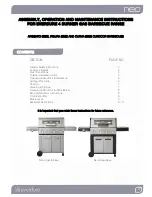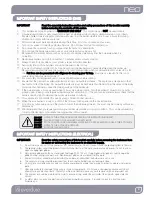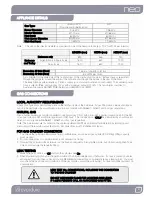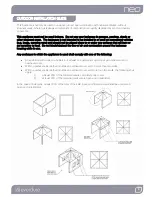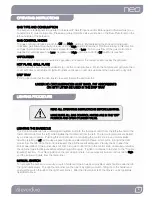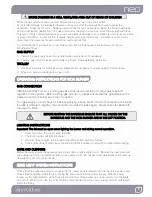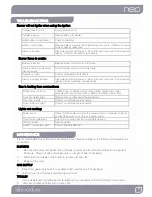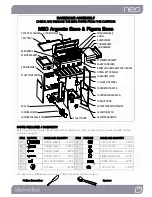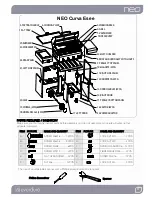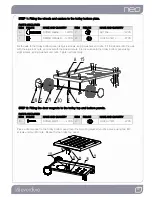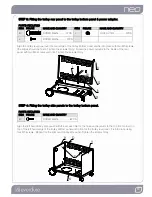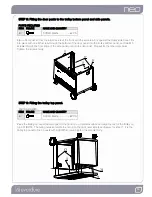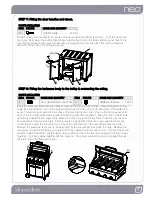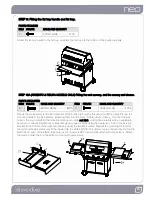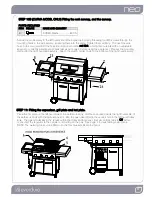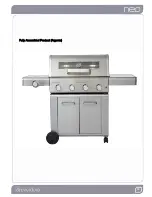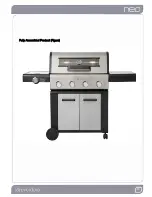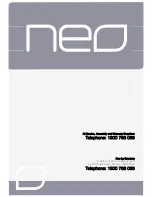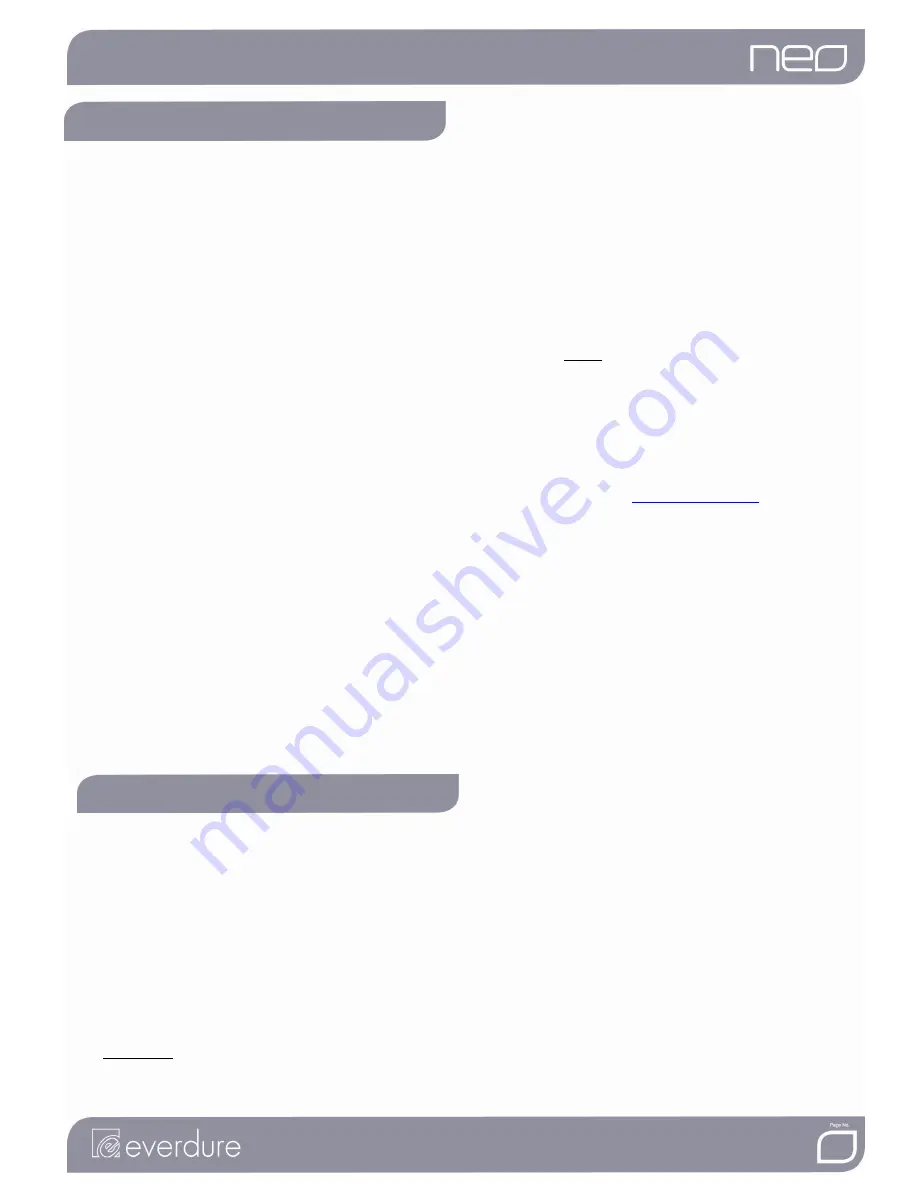
7
COOKING
GENERAL COOKING GUIDE
A fairly protected location is desirable for pleasant and efficient cooking. IMPORTANT! Strong winds will
drastically reduce cooking efficiency. As a guide, allow 10 minutes with the burners on high, to heat cooking
area. A little cooking fat (or olive oil) on the grill will prevent sticking. Cooking time for a 20mm thick steak
cooked to medium on the char grill is approximately 15 minutes (7.5 minutes per side) with the burners on
high. Turn burners down a little when full heat is not required and to LOW when not cooking.
As a guide for Hood closed cooking, use as per the following instructions: Open hood and remove the
solid plate and vapouriser. Position the grill plate central over the two centre burners. Place either the
roasting dish or a foil baking dish in the centre of the bbq. Fill the dish with 2 cm of water. Place a suitably
sized rack in the dish. Place food on the rack so that any fats will drip into the water in the bottom of the dish.
The water will also keep the food moist during cooking. With the hood open light the bbq as per normal
lighting instructions, then close the hood and turn off the two central burners. Leave the outer two burners on
high. This is most important – if left on the two centre burners will cause overheating and spoil the food. As a
rough guide to the cooking times for roast beef, allow 30 to 50 minutes cooking time per kilogram for rare to
well done respectively. It is recommended that the food be turned half way through the cooking time, for
evenness of cooking. Remember, never use the roasting hood with all the burners on high as this will cause
severe overheating and may damage the hood and bbq. During cooking, fat and scrapings will drip through
to the drip tray. Do not allow excess fat to build up in the drip tray. Clean the drip tray and replace the
aluminium foil before use. This is a general guide for roasting only – please check
www.everdure.com
for
any updated cooking guides.
AFTER COOKING
1.
When finished, make sure burner control knobs are turned OFF.
2.
TURN OFF THE GAS SUPPLY AT THE CYLINDER.
3.
Immediately after cooking and whilst the barbecue is still warm, remove scraps from the grill with a
scraper.
4.
Excess fat and meat scraps can be scraped off the vapouriser by removing the grill to gain access.
WARNING: Some surfaces may still be hot.
5.
Clean the fat tray and replace the aluminium foil after or before each use of the appliance.
6.
Once the barbecue is cool close the roasting hood and wipe off any fat splatter from the trolley with a
clean rag.
CLEANING AND STORAGE
CLEANING
Painted surfaces can be cleaned using a mild household detergent or cleaner. It is advisable to test
cleaners on a small section of the appliance first. It is recommended to clean the stainless steel surfaces
with clean water only (no detergents to be used) or use a stainless steel cleaner. Failure to follow these
instructions may void your warranty. Over time, stainless steel will be affected by “tea staining” or “bronzing”
(brown discoloration of stainless steel). This can be reduced by washing the surface with mild detergent and
warm water, followed by rinsing with clean cold water. Dry the surface afterwards.
NEVER use paint thinners or similar solvents for cleaning and NEVER pour cold water over hot surfaces.
STORAGE
WARNING: When the appliance is not in use, the cylinder valve must be turned OFF, the appliance and the
cylinder together must be stored outdoors in a well ventilated area. However it is permissible to store the
appliance (but not the cylinder) indoors. Ensure a small amount of fat or oil is on the barbecue plates to
prevent rust.


